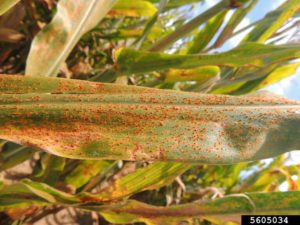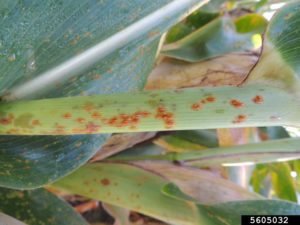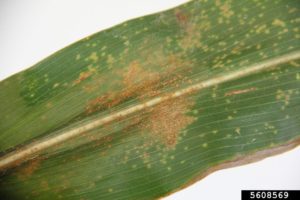By Lexie Maloy
Product Marketing Intern
The growing season of 2021 has provided many areas in the Midwest with favorable conditions for possible southern corn rust development. Currently in the Midwest, southern rust has been observed in southeast Kansas, Missouri, and southern Illinois. Current numbers are low, but if high humidity and temperatures continue the pathogen could spread quickly.
Southern corn rust is a fungus caused by Puccinia polysora. It develops later in the season and thrives with temperatures above 80 F° with high humidity. Overnight dews and rainfall can spread the fungus. At first, small clusters of 2-millimeter circular lesions will appear. As the disease progresses, it elongates adding a yellow halo, eventually becoming rust-colored oblong pustules. The fungus typically appears on the upper leaf surface but can infect the stalks and husks.
Southern corn rust typically causes more damage in later planted corn fields, so try to minimize damage by avoiding late planting if possible. If you have southern corn rust damage, evaluate the field with your AgVenture Yield Specialist to decide if it warrants a fungicide pass. Typical fungicide applications cost $20-$25 per acre; if more than 10% of the leaf area is affected, consider applying a fungicide to your crop to avoid further yield loss.
Typically, this disease only damages crops in the Corn Belt once every five years, but when it does, yields can be decreased by more than 40%. The impact that southern corn rust has on yield depends largely on the time of infection, the amount of infection present on the leaf, and the location of the damage on the plant. Low yield impacts can be expected if the southern corn rust is only found on the lower leaves after the corn is well-dented.
Ideal scouting for southern corn rust takes place from VT through R4, earlier if working in production fields. When scouting for this disease know that it can easily be confused with common rust. A diagnostic for southern rust versus common rust is looking for the orange pustulates that should be predominantly on the upper leaf surface for southern rust.
Sources: Kansas State University Department of Agronomy. Iowa State University Extension and Outreach.


